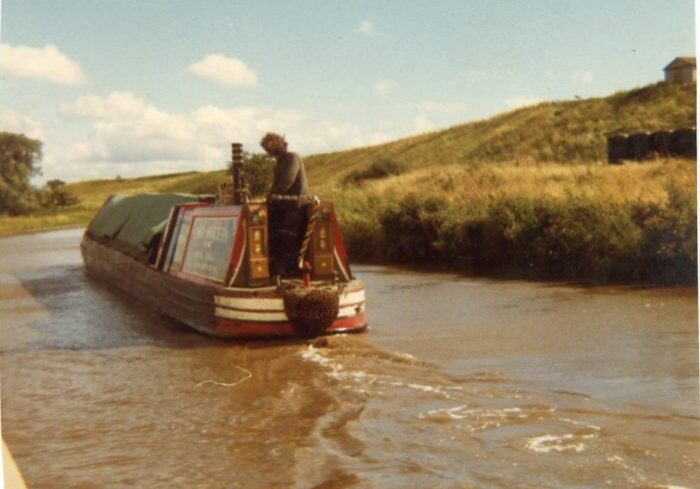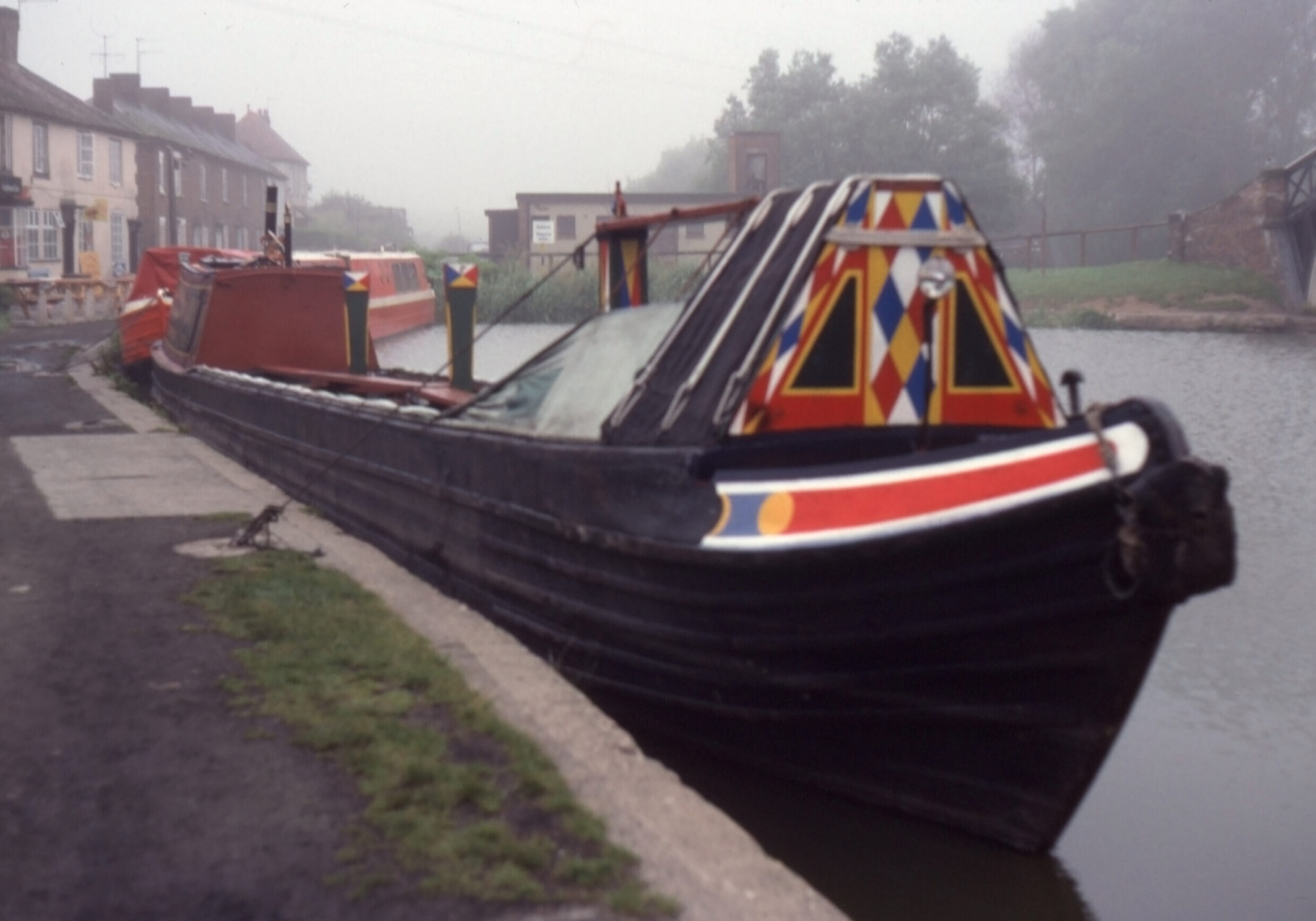INTRODUCTION
Narrow Boats were the main form of transport used for commercial carrying during the Industrial Revolution on the canal system that radiated out from the Midlands of England. They were mostly built to accommodated craft that were 72 feet long and 7 feet wide. Other waterways such as cross country canals and rivers had their own style of boats that were often bigger than Narrow Boats but Narrow Boat were a far better way of moving materials and products across the centre of the country than packhorse or horse & cart.

This was the first 'Working Boat' I encountered back in the 1970's
Early Days
In the early days boatmen could make a very good living from the boats and afford to employ a crew but the coming of the railways changed that. Trains could travel faster and carry more goods so to compete, the canal carriers and boatmen had to cut costs. Boatmen’s families were moved on-board, which avoided the cost of paying a crew and this meant the boats became the family home. Families brought what they could with them like brass & lace. This started the whole culture of decoration and ornamentation to enhance the living space on board and evolved into 'Roses & Castles.'.
Boating Families
Boatmen and their families became a world of their own, a world that often seemed shut away from the rest of society. This did not really change during the many years of commercial carrying although outsiders tried to improve the lot of the boatmen and their families whether they appreciated it or not.
Today
Today the name 'Narrow Boat' is sometimes written as one word, 'Narrowboat.' Some say this is to distinguish between the traditional working boats and todays boats that are used for homes, holidays, floating shop, craft studios, etc.
There are many traditional Narrow Boats in preservation although they don't represent the full range of designs that were built. Maybe there is an argument for building reproduction traditional boats as now happening with steam trains to fill in the gap of those lost to history.

Photographed at Hawksberry Junction, June 1980
